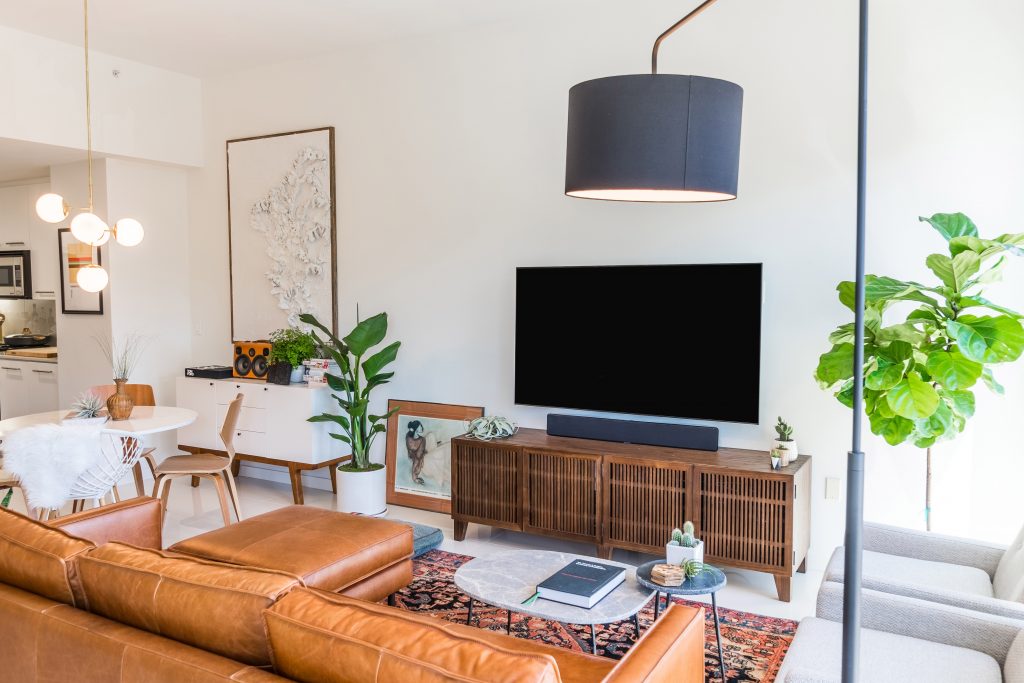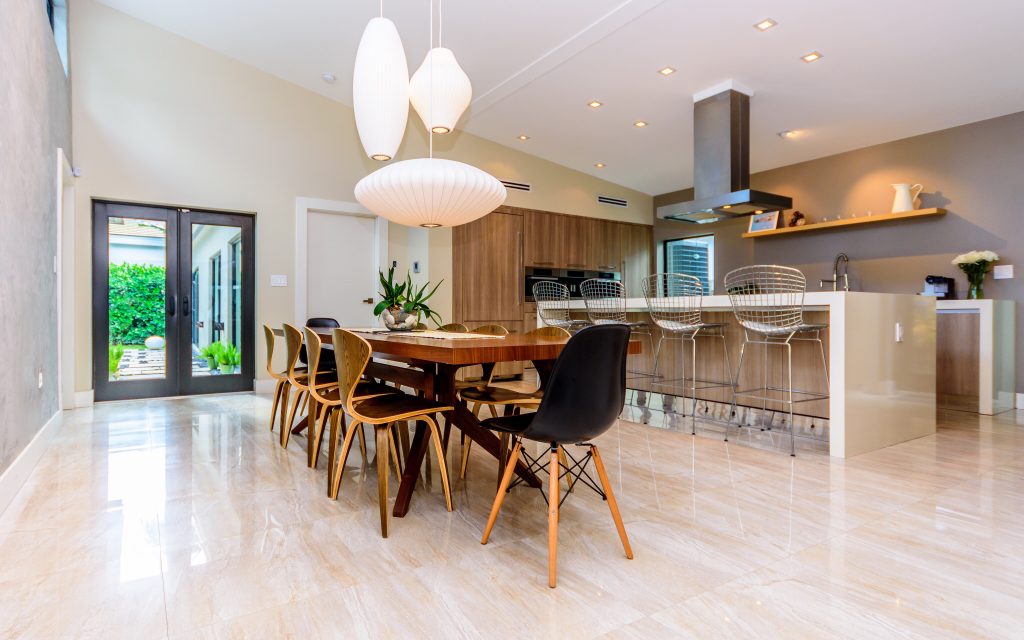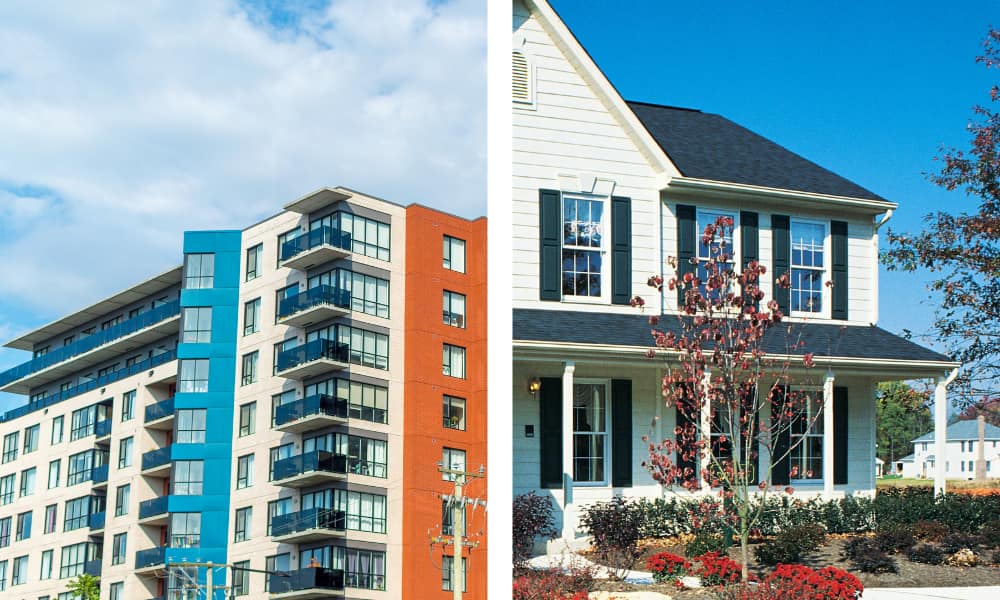Congratulations! You’ve decided to invest in property in one of the fastest-growing markets in the country — Washington D.C.
Hailed for its historic charm, close proximity to the bustling city life, and picturesque backdrop, families and singles alike are flocking to the area. And so are property investors.
With so many historic buildings still in existence and new construction popping up every day, the question remains — what’s the better investment? New builds vs. the fixer-upper?
Both sides of the aisle have their pros and cons and we’ll explore them here.
Before you make a purchase, read on to learn more about the opportunities and pitfalls of investing in new builds vs. the fixer-upper.
The Pros and Cons of Investing in New Builds
There’s nothing quite like a brand new home. The crisp, clean lines. Floors and appliances that have never been used. The smell.

But, sometimes, new builds come with their own sets of problems and headaches to look out for. Here, we’ll cover both.
Pros
Purchasing a brand new, move-in-ready home definitely offers some perks that you won’t find anywhere else.
Smooth Transition
When you invest in a new build, all the heavy lifting is done for you. Most new builds are move-in-ready. These homes are also known as turn-key because all that’s left for you to do is turn the key and enter!
You don’t have to worry about permits, inspections, scheduling contractors, or fixing leaky pipes or cracked floorboards. New builds are crisp, clean, and pristine.
Start Making Money Right Away
Since your new build investment is ready for inhabitants from day one, there’s no lag time between your purchase and finding tenants. In fact, you can market your property even before the closing date.
While you may not gain access to the building, you can show prospective renters floor plans and photos. This means lining up income the moment the sale is finalized.
State of the Art Design and Technology
Although one attractive feature of living in Washington D.C. is the historic charm, some renters want the best of the best. New builds offer top of the line appliances, design elements, and technology.
This is ideal for young professionals and millennials looking to rent their first home. You won’t be dealing with outdated appliances, wallpaper, or carpet.
Most new builds are also equipped with tons of gadgets including intercom systems, cameras, and wireless capabilities. These added security features are perfect for families and retired couples looking for an added sense of security.
New builds often incorporate functional floor plans that withstand the test of time, creating a timeless layout.
Energy Efficient
In a world that’s increasingly eco-friendly, new builds are focused on using energy-efficient materials. Windows and insulation help keep the home cooler in the summer and warmer in the winter, lowering the electric bill and upkeep costs.
This amounts to thousands of dollars in savings over the course of your investment.
More Financing Options
Are you looking to invest but are struggling to secure funding? You’ll find you have more financing options when purchasing new builds vs. the fixer-upper.
That’s because banks and other lenders are more willing to spend money on a secure investment with minimal risk. New construction doesn’t carry the same level of risk as lending for a fixer-upper with hidden issues.
Keep in mind that other factors affect your ability to secure funding. Things like the amount of your down payment, your credit history, and income all play a role.
Prime Location
Most new builds are constructed where the action is. Downtown, in popular historic districts, or where other retail or industrial construction is taking place.
That means your new build is likely at the center of D.C. and exactly where prospective renters want to be. Find new builds in up-and-coming areas with close proximity to shopping and public transportation.
Tenants with an active social life are more likely to rent near a bustling city with plenty of restaurants, activities, and parks.
Cons
You might be thinking, “What could possibly go wrong with investing in a brand new construction?”.
It’s not so much a matter of things going wrong but instead about looking at the long-term impacts of buying new and deciding what’s more valuable — time or money.
Depreciation of Property Value
Similar to when you purchase a brand new car, the minute you drive it off the lot it automatically depreciates. The same is true for a new build.
The price always starts at the high end of the value scale and there’s no guarantee it’ll stay there. The best way to protect yourself against taking a major hit is by researching real estate market trends before making a purchase.
But remember, regardless of how much research you do, the market is unpredictable. Investing in new construction does come with a certain level of risk.
Purchase Price
It’s no surprise that the purchase price of new construction is much higher than a fixer-upper. After all, you’re getting state of the art appliances, brand new flooring, paint, light fixtures, and everything in between.
Not only are you paying for these items but also peace of mind. For some investors, this is well worth the upgrade.
Less Personality
Let’s face it. For construction companies to create new builds in a timely fashion, they tend to create cookie-cutter versions. Most units have the same light fixtures, countertops, cabinets, and appliances.
This makes it faster and cheaper for companies to produce new homes on a mass scale. And while this is an efficient way of doing business, it eliminates personality from the project.
When buying new builds vs. the fixer-upper you have minimal say over design elements. You get what you get and you don’t get upset.
Many investors don’t care too much about adding personality to the home. After all, you’re investing to rent it to someone else. It’s not really your home to personalize.

Others prefer a say over the layout and other interior elements. If this describes you then you might be better suited for a fixer-upper.
The Pros and Cons of Investing in a Fixer-Upper
Do you love a good DIY project? Do you have an eye for design that you want to utilize as part of your investment plan?
If so, a fixer-upper in D.C. might be the right choice for you. Here are some pros and cons of investing in a project rental in the D.C. area.
Pros
There’s no shortage of older homes in Washington D.C. that just needs a little TLC. Here are a few reasons to take advantage of a fixer-upper opportunity.
Lower Initial Cost
This is the main reason people invest in fix-uppers — it’s cheaper from the start. The initial price you’ll pay for a home is much lower than that of a new build.
Most homeowners selling a house in need of updates and repair prices it accordingly. That means you can score a home for below the current market value.
Just keep in mind that depending on how much work needs to be done, you may have to wait a few months before renting out the property. Account for this lag time in your financial plan.
Historical and Architectural Significance
One of the greatest appeals to renting, living, and investing in Washington D.C. is the historical significance and architectural beauty.
There’s something iconic and classic about an original D.C. home. They embody charm and personality that you’d be hard-pressed to find in a new build.
Some people looking to rent in D.C. are coming strictly for the historic significance. As an investor, you could benefit from purchasing a fixer-upper that embodies the classic, highly-sought-after D.C. charm and elegance.
Design Choices
When it comes to showing and marketing your rental property, you want it to be something you’re proud of. Does a new build feel too impersonal and sterile?
Fixer-uppers allow you to have direct involvement in the design process. You can add elements of personality and flare.

In some cases, you can completely gut the home and create an entirely new look!
More Than a Financial Investment
Do you take pride in your work? Do you want a personal stake in your investment property?
Fixer-uppers give you the unique opportunity to roll your sleeves up and get your hands dirty. Helping perform renovations and transforming your rental property from something drab to something fab brings with it a certain sense of accomplishment.
If you want to invest more than just your money into a rental property in Washington D.C., a fixer-upper gives you the chance to make a more personal contribution.
Cons
While investing in a fixer-upper gives you a more personal stake in the home, it’s not without a price. Here are some cons to consider.
Repair and Renovation Costs
Although you’ll save on the initial price of a fixer-upper, you’ll ultimately spend a pretty penny performing repairs and renovations. This is one of the downsides of purchasing a fixer-upper project.
Before you make the purchase, sit down and crunch numbers. Calculate the sale price of the home and the estimated cost of repairs. How much will you rent the home for?
Compare these figures to your overhead expenses to make sure you’ll come out financially ahead when the dust settles.
It’s More Work
Aside from the financial cost of purchasing a fixer-upper, you’ll also need to put in a lot of time, effort, and sweat equity.
If DIY projects and home renovation isn’t your thing, you may want to avoid purchasing a fixer-upper. While you can hire general contractors to perform these jobs for you, it’ll end up costing you even more in the long run.
Minor changes to the home like painting a few rooms or updating light fixtures might not be too bad. Homes that need major renovations like ripping up carpet and laying floors or remodeling an entire bathroom might not be worth your time.
Longer Wait for Tenants
Speaking of time. You won’t be able to rent your fixer-upper home until it’s, well, fixed! That means several months without any rental income.
Most investors are looking to make money right away. If you’re purchasing a fixer-upper in Washington D.C. for passive income or a side project, time may not be an issue for you.
Fixer-uppers are not ideal for those looking to make a quick buck or who want a fast turnaround.
Unwanted Surprises
Sometimes in life, surprises are a good thing. That’s not often the case when discussing buying a fixer-upper.
The truth is, you never know what problems lie beneath. Even if the home passes the initial inspection, you may uncover more issues during the renovation process. This is one of the inherent risks of buying a home that needs upgrades.
You won’t know what’s behind the wall, under the floor, or lurking in the insulation until it’s too late.
New Builds vs. the Fixer-Upper: The Great Investment Debate
Are you looking to invest in property in the D.C. area? If so, you have your choice of gorgeous and charming existing homes or new construction in many up-and-coming districts.
There are pros and cons to both sides of the equation. When choosing between new builds vs. the fixer-upper, it’s all about how much work, time, and money you’re willing to spend.
If you don’t mind spending a little more upfront so that you have less worry long-term than a new build might be right for you.
On the other hand, if you don’t mind putting in the work and effort (and can’t imagine passing on an original D.C. home), then you’re likely prepared to tackle a fixer-upper project.
Whichever route you choose, investing in property in D.C. is a smart and lucrative decision.
Need help managing your new property or finding the perfect rental? Our team of professionals can help.
Contact us today for more information!



































